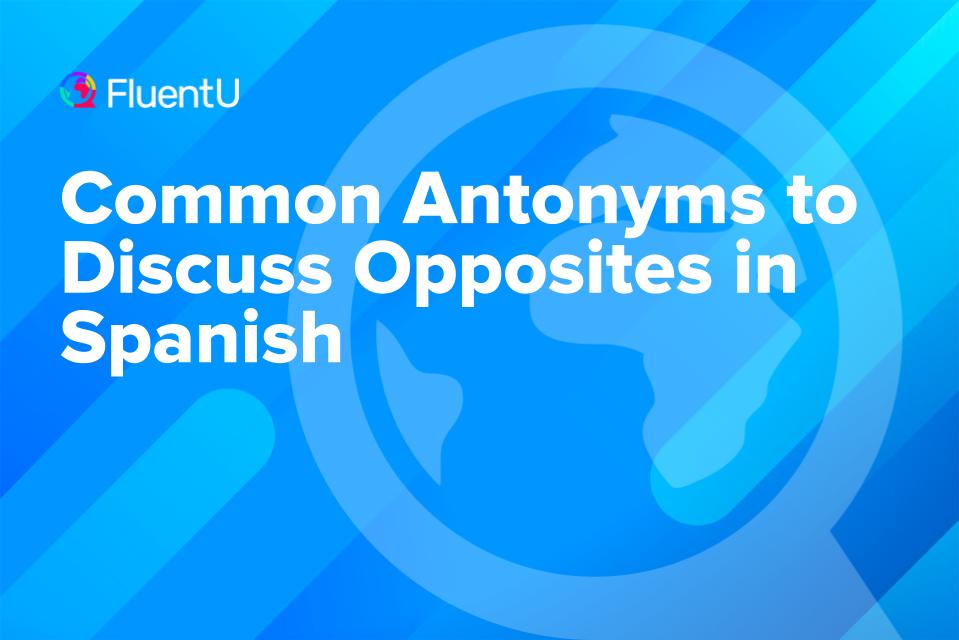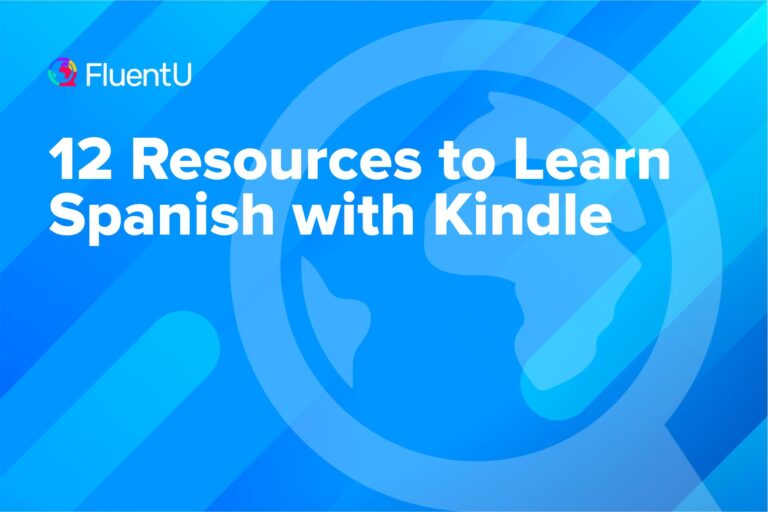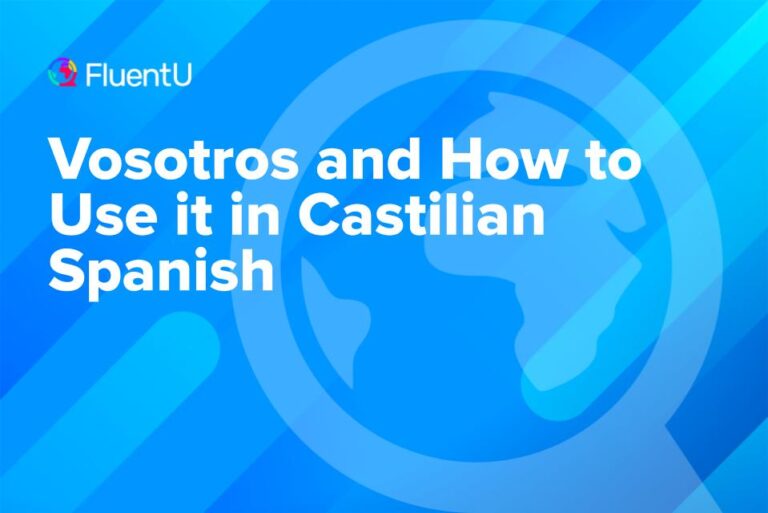Contents
- 1. Antiguo & Moderno — Old & Modern
- 2. Corto & Largo — Short & Long
- 3. Estrecho & Ancho — Narrow & Wide
- 4. Bueno & Malo — Good & Bad
- 5. Cómodo & Incómodo — Comfortable & Uncomfortable
- 6. Caro & Barato — Expensive & Cheap
- 7. Antipático & Simpático — Unfriendly & Friendly
- 8. Débil & Fuerte — Weak & Strong
- 9. Duro & Blando — Hard & Soft
- 10. Frío & Caliente — Cold & Hot
- 11. Grande & Pequeño — Big & Small
- 12. Delgado & Gordo — Thin & Fat
- 13. Tonto & Inteligente — Dumb & Intelligent
- 14. Lleno & Vacío — Full & Empty
- 15. Claro & Oscuro — Light & Dark
- 16. Alto & Bajo — Tall & Short
- 17. Fácil & Difícil — Easy & Difficult
- 18. Limpio & Sucio — Clean & Dirty
- 19. Cómico & Trágico — Funny & Tragic
- 20. Hermoso & Feo — Beautiful & Ugly
- 21. Interesante & Aburrido — Interesting & Boring
- 22. Joven & Viejo — Young & Old
- 23. Más & Menos — More & Less
- 24. Mejor & Peor — Better & Worse
- 25. Mucho & Poco — A lot & Not much
- 26. Rápido & Lento — Fast & Slow
- 27. Soltero & Casado — Single & Married
- 28. Abierto & Cerrado — Open & Closed
- 29. Feliz & Triste — Happy & Sad
- 30. Ligero & Pesado — Light & Heavy
- 31. Posible & Imposible — Possible & Impossible
- 32. Dulce & Salado — Sweet & Salty
- 33. Callado & Hablador — Quiet & Talkative
- 34. Optimista & Pesimista — Optimistic & Pessimistic
- 35. Extrovertido & Introvertido — Extroverted & Introverted
- 36. Distinto & Igual — Different & Same
- 37. Valiente & Cobarde — Brave & Coward
- 38. Barbudo & Lampiño — Bearded & Clean-shaven
- 39. Temprano & Tarde — Early & Late
- 40. Cercano & Lejano — Near & Far
- Spanish Antonyms (Opposites) and Why You Should Study Them
- And One More Thing…
Common Antonyms to Discuss Opposites in Spanish

Adjectives are an essential part of a sentence in any language. Tt may seem like there are endless adjectives to learn in Spanish, but fear not.
Learning adjectives with antonym sets is an effective way to boost your Spanish vocabulary quickly—every time you learn a new adjective, try learning its opposite, too.
Download: This blog post is available as a convenient and portable PDF that you can take anywhere. Click here to get a copy. (Download)
1. Antiguo & Moderno — Old & Modern
Antiguo can also mean “antique” or “ancient,” while moderno can also be slang for “trendy.”
Las cosas en el museo son muy antiguas, pero el edificio es muy moderno.
(The things in the museum are very old, but the building is very modern.)
2. Corto & Largo — Short & Long
A Juan solamente le gusta el pelo largo, pero Lupe tiene el pelo corto.
(Juan only likes long hair, but Lupe has short hair.)
3. Estrecho & Ancho — Narrow & Wide
Cuando hay coches, la calle parece muy estrecha, pero en realidad es ancha.
(When there are cars, the street feels very narrow, but actually it is wide.)
4. Bueno & Malo — Good & Bad
Las verduras son muy buenas para la salud, pero los dulces son malos.
(Vegetables are very good for health, but candies are bad.)
5. Cómodo & Incómodo — Comfortable & Uncomfortable
Cómodo can also mean “convenient,” and incómodo can also mean “awkward.”
El sofá es cómodo, pero la silla es incómoda.
(The couch is comfortable, but the chair is uncomfortable.)
6. Caro & Barato — Expensive & Cheap
Barato can also be translated to mean “trashy.”
Quiero un coche caro, pero solamente tengo un coche barato.
(I want an expensive car, but I only have a cheap car.)
7. Antipático & Simpático — Unfriendly & Friendly
Antipático can also be used to mean “unpleasant” or “disagreeable,” and simpático on the other hand can also be used to mean “pleasant” or “agreeable.”
Ella es muy antipática, pero su familia es muy simpática.
(She is very unfriendly, but her family is very pleasant.)
8. Débil & Fuerte — Weak & Strong
Muchas personas en el gimnasio son débiles, pero Margarita es muy fuerte.
(Many people in the gym are very weak, but Margarita is very strong.)
9. Duro & Blando — Hard & Soft
Duro also means “tough” or “severe.”
Las piedras son duras y mi colchón es blando. Lo prefiero así.
(Rocks are hard and my mattress is soft. I prefer it like this.)
10. Frío & Caliente — Cold & Hot
El helado está frío y mi café está caliente. Me duelen los dientes.
(The ice cream is cold and my coffee is hot. My teeth hurt.)
11. Grande & Pequeño — Big & Small
El bajo es un instrumento grande y el ukelele es pequeño.
(The bass is a big instrument and the ukulele is small.)
12. Delgado & Gordo — Thin & Fat
Mi hermana es delgada, pero yo soy gorda.
(My sister is thin, but I’m fat.)
13. Tonto & Inteligente — Dumb & Intelligent
Los estudiantes que no estudian son tontos, pero los que estudian son inteligentes.
(The students that do not study are dumb, but those that study are intelligent.)
14. Lleno & Vacío — Full & Empty
Mi taza está llena, pero tu taza está vacía. ¿Tienes sed?
(My cup is full, but your cup is empty. Are you thirsty?)
15. Claro & Oscuro — Light & Dark
Along with meaning “clear,” claro also means “light,” “bright,” “pale” or even “thin”/”weak.” Oscuro, on the other hand, as well as meaning “dark,” can also translate to “uncertain,” “shady” or “overcast.”
Tu camisa es clara, pero la mía es oscura.
(Your shirt is light, but mine is dark.)
16. Alto & Bajo — Tall & Short
Alto can also be used to mean “high,” or “loud” when talking about sound. Similarly, bajo can also mean “low” or “quiet.”
Los jugadores de baloncesto son muy altos, pero los gimnastas son muy bajos.
(Basketball players are very tall, but gymnasts are very short.)
17. Fácil & Difícil — Easy & Difficult
Preferiría que la tarea fuera fácil, pero es difícil.
(I would prefer the homework to be easy, but it is difficult.)
18. Limpio & Sucio — Clean & Dirty
Quiero una casa limpia, pero siempre tengo una casa sucia.
(I want a clean house, but I always have a dirty house.)
19. Cómico & Trágico — Funny & Tragic
Prefiero las obras cómicas a las obras trágicas.
(I prefer funny/comedic plays to tragic plays.)
20. Hermoso & Feo — Beautiful & Ugly
La Cenicienta es hermosa y sus hermanastras son feas.
(Cinderella is beautiful and her stepsisters are ugly.)
21. Interesante & Aburrido — Interesting & Boring
La clase es interesante, pero la tarea es aburrida.
(The class is interesting, but the homework is boring.)
22. Joven & Viejo — Young & Old
Quiero ser joven, pero soy viejo/vieja.
(I want to be young, but I’m old.)
23. Más & Menos — More & Less
Quiero más dinero y menos problemas.
(I want more money and fewer problems.)
24. Mejor & Peor — Better & Worse
Mi coche es mejor que el tuyo, pero es peor que el de Juan.
(My car is better than yours, but it’s worse than Juan’s.)
25. Mucho & Poco — A lot & Not much
Mucho can also “much,” “many,” “too much,” “too many” or “a lot of.” Poco can also mean “little” or “few.”
Tengo muchos intereses pero poco tiempo.
(I have many interests but little time.)
26. Rápido & Lento — Fast & Slow
Es más rápido ir a trabajar en mi coche que en el autobús. El autobús va muy lento.
(It’s faster to go to work in my car than on the bus. The bus is very slow.)
27. Soltero & Casado — Single & Married
Pablo ya no está soltero. El año pasado se casó y ahora es un hombre casado.
(Pablo is no longer single. Last year he got married and now he is a married man.)
28. Abierto & Cerrado — Open & Closed
¿El restaurante está abierto o cerrado hoy?
(Is the restaurant open or closed today?)
29. Feliz & Triste — Happy & Sad
Desde que viajó a Finlandia ya no está triste. Ahora está tan feliz y lleno de vida.
(Since he traveled to Finland he is no longer sad. Now he is so happy and full of life.)
30. Ligero & Pesado — Light & Heavy
Me dijo que la bolsa de patatas era ligera pero es muy pesada.
(He told me that the bag of potatoes was light but it’s very heavy.)
31. Posible & Imposible — Possible & Impossible
¿Por qué dices que es imposible cuando todo es posible?
(Why do you say that it’s impossible when everything is possible?)
32. Dulce & Salado — Sweet & Salty
Salado can also be translated to mean “savory.”
A mí me gusta más el dulce que el salado.
(I like sweet more than salty/savory.)
33. Callado & Hablador — Quiet & Talkative
En el pasado Juan era callado, pero ahora es muy hablador.
(In the past Juan was quiet, but now he’s very talkative.)
34. Optimista & Pesimista — Optimistic & Pessimistic
Trato de ser lo más optimista posible, pero mi amigo es bastante pesimista.
(I try to be as optimistic as possible, but my friend is quite pessimistic.)
35. Extrovertido & Introvertido — Extroverted & Introverted
María nunca ha sido una persona introvertida, desde pequeña ha sido muy extrovertida.
(María has never been an introvert, since she was a child she has been very outgoing.)
36. Distinto & Igual — Different & Same
Creí que estos vestidos eran distintos, pero me acabo de dar cuenta que son iguales.
(I thought these dresses were different, but I just realized that they are the same.)
37. Valiente & Cobarde — Brave & Coward
Que nadie lo llame cobarde, es la persona más valiente que conozco.
(No one should call him a coward, he’s the bravest person I know.)
38. Barbudo & Lampiño — Bearded & Clean-shaven
Guillermo siempre ha sido barbudo, pero su hermano es lampiño.
(Guillermo has always been bearded, but his brother is beardless.)
39. Temprano & Tarde — Early & Late
Luca iba a despertarse temprano hoy, pero no sonó su alarma y se despertó tarde.
(Luca was going to wake up early today, but his alarm didn’t go off and he woke up late.)
40. Cercano & Lejano — Near & Far
En un futuro cercano, a Juan le gustaría viajar a algún lugar lejano para aprender un nuevo idioma.
(In the near future, Juan would like to travel to some faraway place to learn a new language.)
Spanish Antonyms (Opposites) and Why You Should Study Them
Antonyms are words which have opposite meanings.
They’re also generally used to describe the same things: For example, you might describe someone using the antonyms “tall” or “short,” which are both used to describe height. Because of this, it’s helpful to be able to remember both terms together.
Studying antonym sets is a great way to learn vocabulary quickly by connecting related terms in your mind. They will help you start thinking in Spanish and provide you with a more complex understanding of these words.
- A fun way to study antonyms is by using flashcards. Put one word on one side and its antonym on the other side. Look at one word and name its antonym. Flip the pile of flashcards over and try it with the opposite sides.
- You can also practice your antonyms in any conversation or listening activity. Whenever you’re listening to a person or an audio, pick out an adjective you hear and (mentally or textually) note the opposite. This is great practice that will help reinforce all your learning.
- Immersion is often the key to learning new vocabulary, however you don’t have to be in a Spanish-speaking country to have an immersive experience. There are plenty of resources online that you can use to practice Spanish. For example, you could listen to music in Spanish and try to pick up some new antonyms.
- Another useful resource is FluentU, a language learning program that immerses you in the language with Spanish videos.
FluentU takes authentic videos—like music videos, movie trailers, news and inspiring talks—and turns them into personalized language learning lessons.
You can try FluentU for free for 2 weeks. Check out the website or download the iOS app or Android app.
P.S. Click here to take advantage of our current sale! (Expires at the end of this month)

Learning antonyms is a great way to expand your vocabulary quickly and effectively.
Now you know 40 essential Spanish antonyms, you can start using them in your Spanish conversations.
It should be great (and definitely not awful).
Download: This blog post is available as a convenient and portable PDF that you can take anywhere. Click here to get a copy. (Download)
And One More Thing…
If you've made it this far that means you probably enjoy learning Spanish with engaging material and will then love FluentU.
Other sites use scripted content. FluentU uses a natural approach that helps you ease into the Spanish language and culture over time. You’ll learn Spanish as it’s actually spoken by real people.
FluentU has a wide variety of videos, as you can see here:

FluentU brings native videos within reach with interactive transcripts. You can tap on any word to look it up instantly. Every definition has examples that have been written to help you understand how the word is used. If you see an interesting word you don’t know, you can add it to a vocab list.

Review a complete interactive transcript under the Dialogue tab, and find words and phrases listed under Vocab.

Learn all the vocabulary in any video with FluentU’s robust learning engine. Swipe left or right to see more examples of the word you’re on.

The best part is that FluentU keeps track of the vocabulary that you’re learning, and gives you extra practice with difficult words. It'll even remind you when it’s time to review what you’ve learned. Every learner has a truly personalized experience, even if they’re learning with the same video.
Start using the FluentU website on your computer or tablet or, better yet, download the FluentU app from the iTunes or Google Play store. Click here to take advantage of our current sale! (Expires at the end of this month.)








